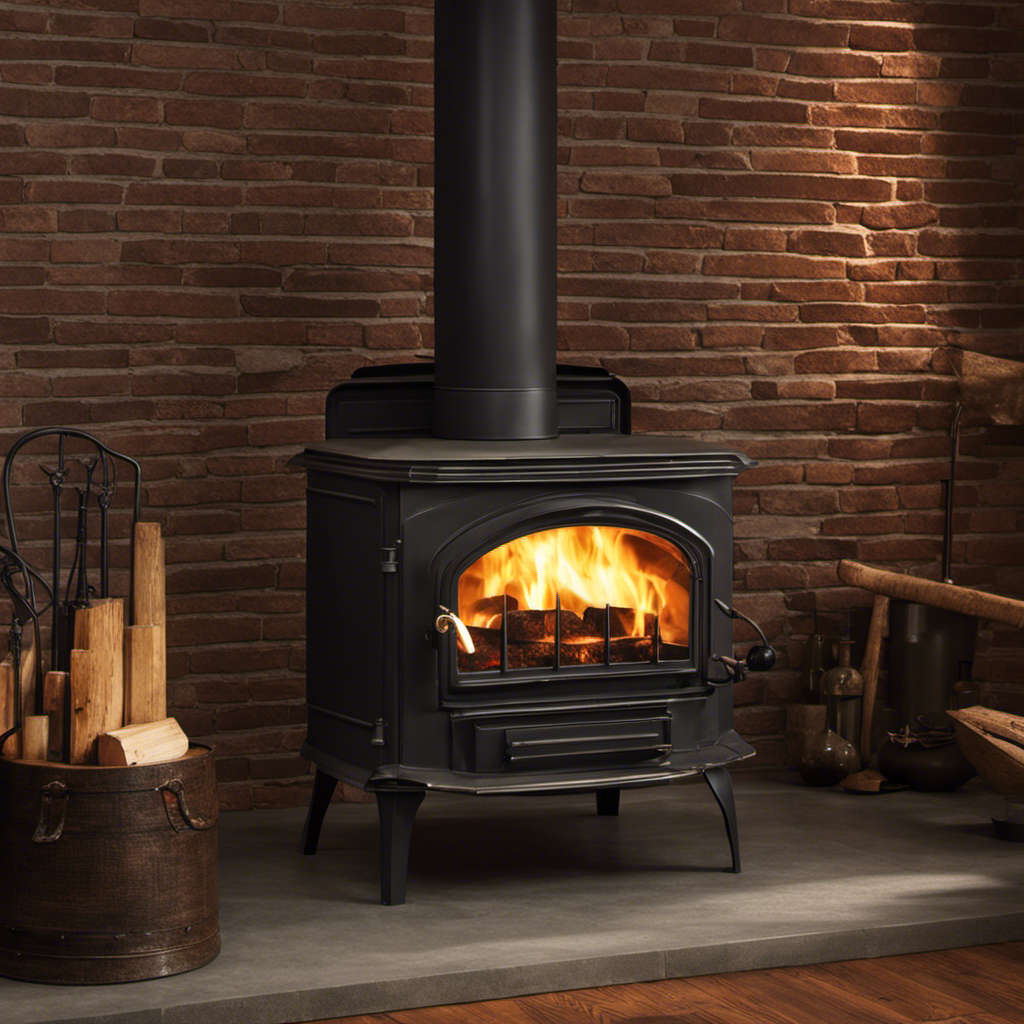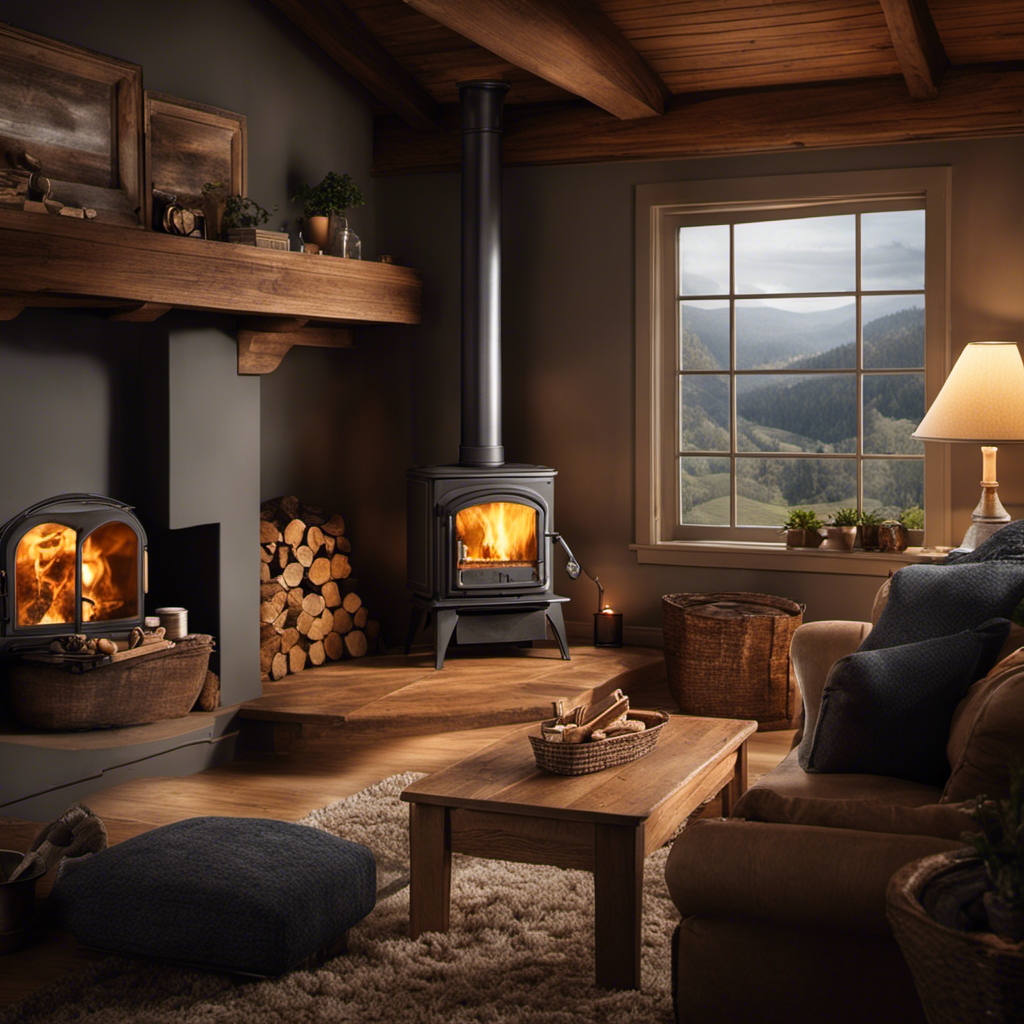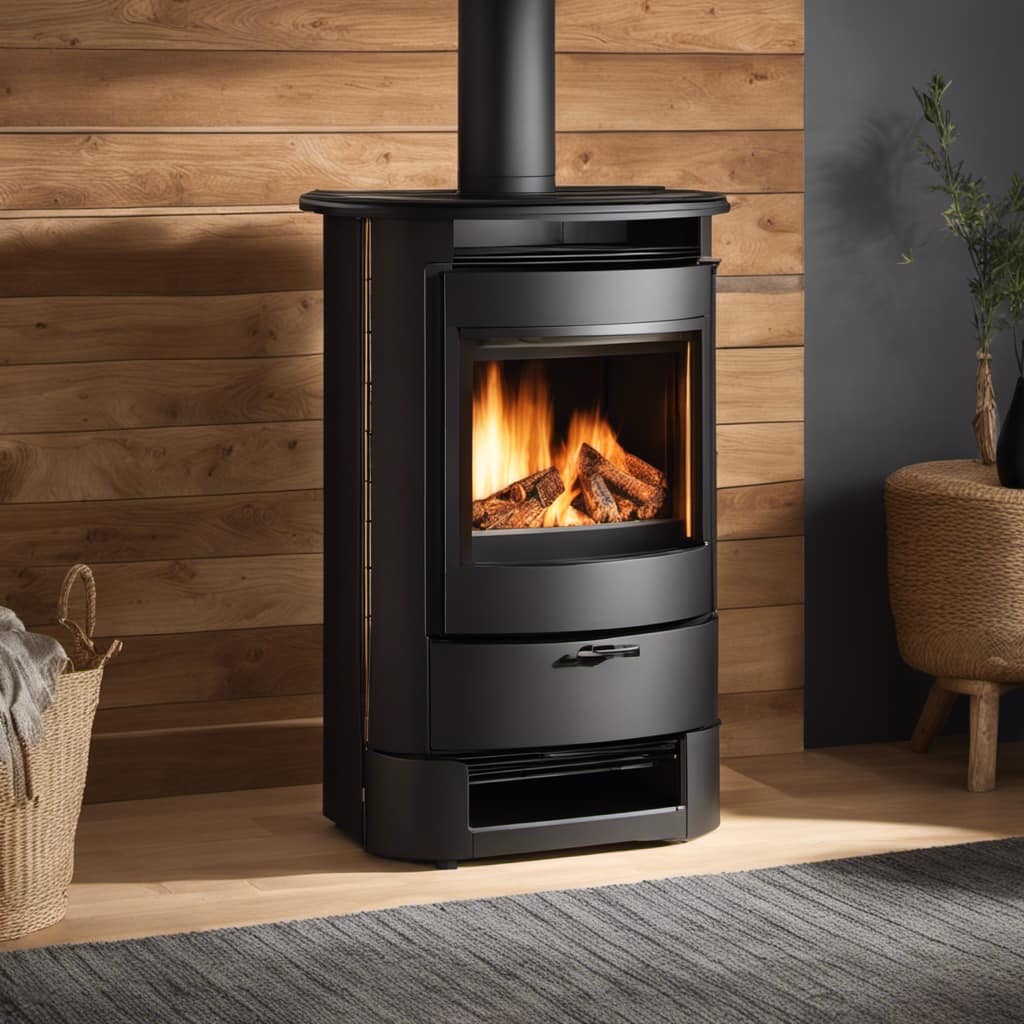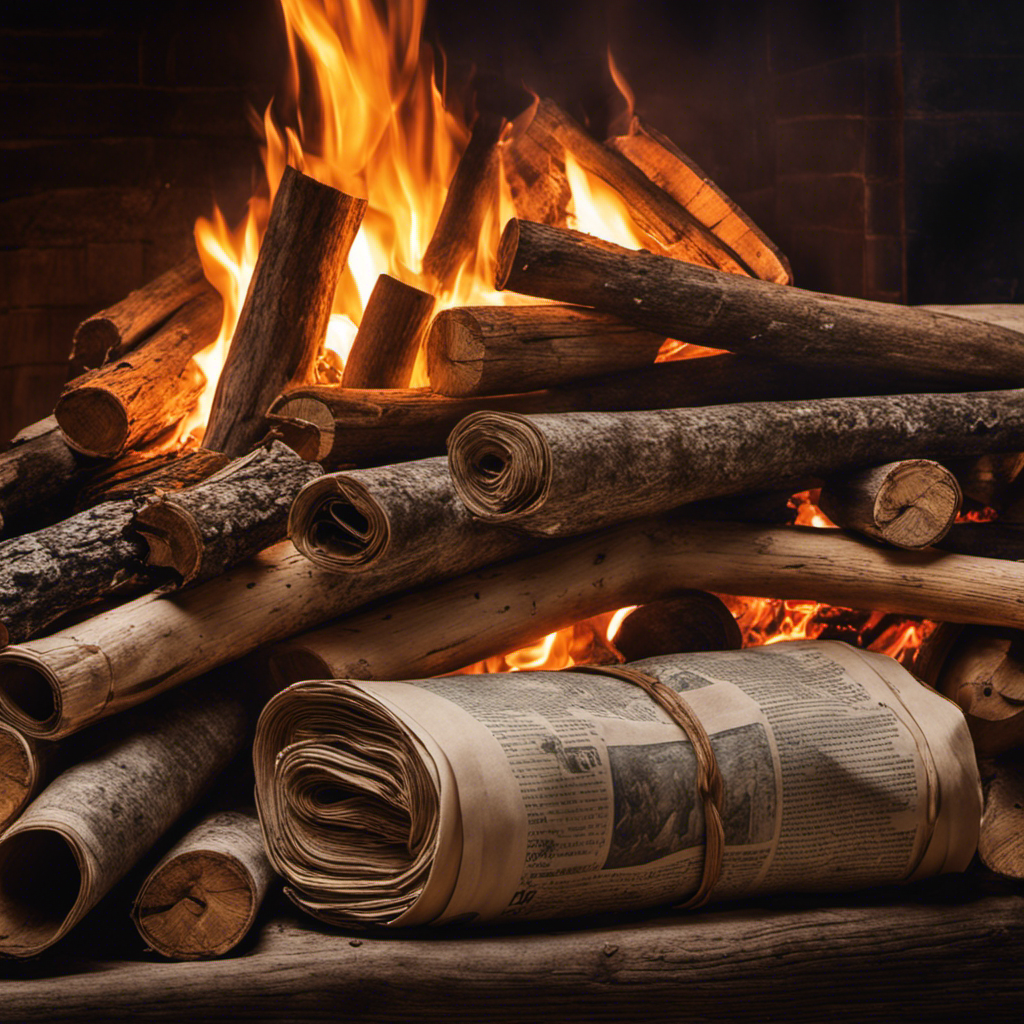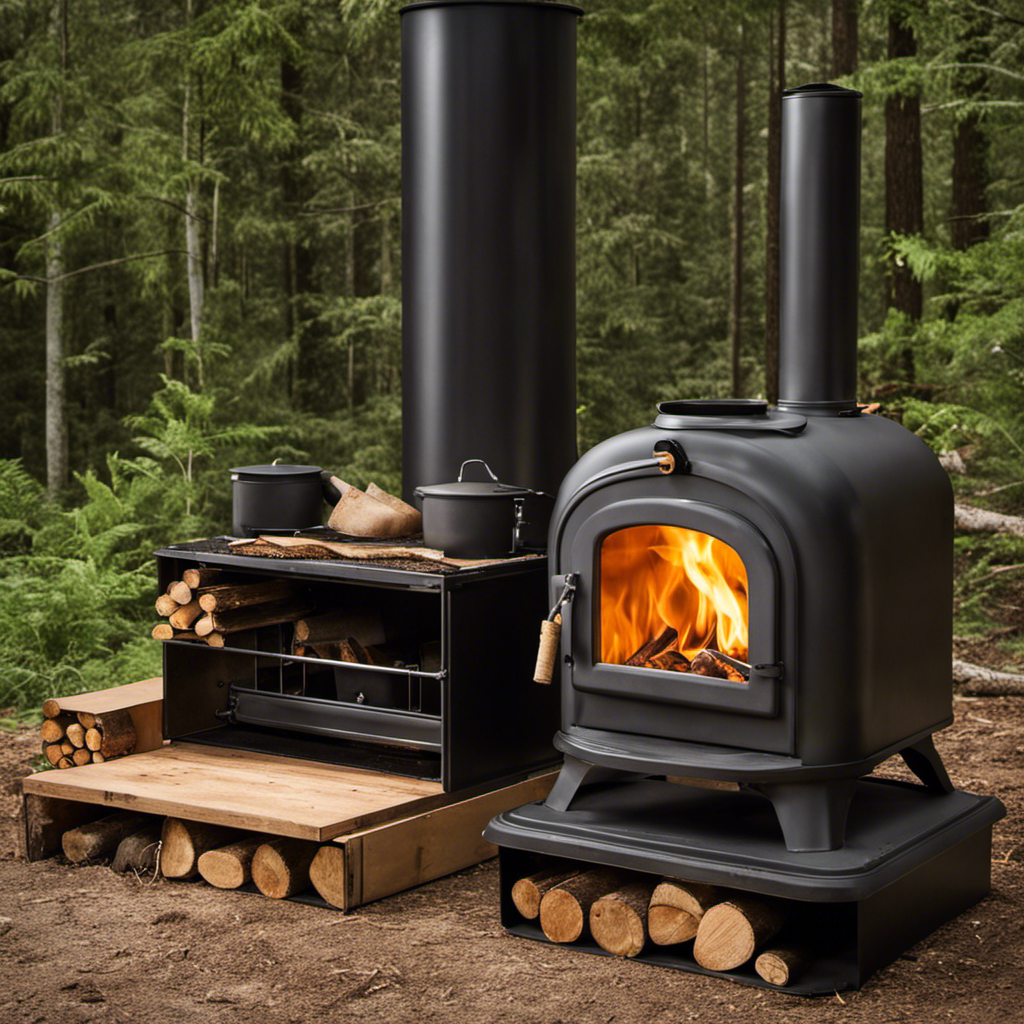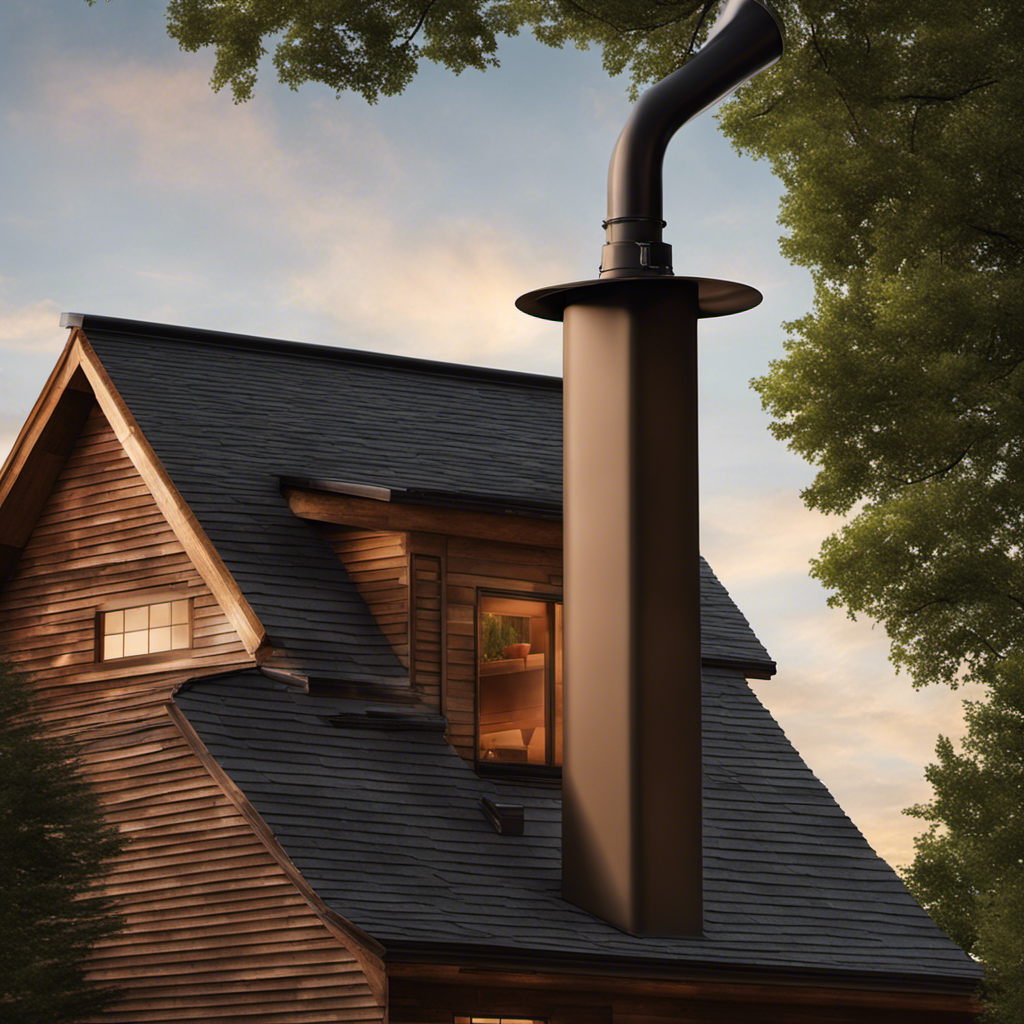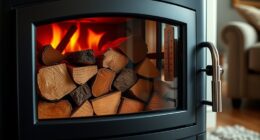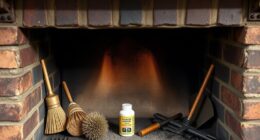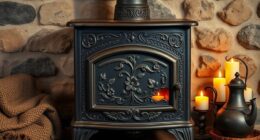Were you aware that the longevity of a wood stove can significantly differ based on a multitude of factors?
As an experienced wood stove owner, I understand the importance of maximizing the longevity of this essential home appliance. In this article, I will share my knowledge and provide detailed maintenance tips to help you extend the lifespan of your wood stove.
Stay tuned to learn about the signs that indicate it may be time for a replacement and the different lifespans of various types of wood stoves.
Key Takeaways
- Regular maintenance and proper usage are essential for extending the lifespan of a wood stove.
- Factors such as creosote buildup, the quality of wood being burned, and excessive heat can affect the longevity of a wood stove.
- Signs that indicate a wood stove may need replacement include a decrease in heat output, cracks or warping in the stove body, rust or corrosion on the exterior, and a worn-out or damaged door gasket.
- The type of wood stove also plays a role in its lifespan, with cast iron stoves offering excellent heat retention and durability, while steel stoves heat up quickly but may require more maintenance and replacement parts.
Factors Affecting Wood Stove Lifespan
I’ve noticed that regular maintenance and proper usage are crucial for maximizing the lifespan of a wood stove. There are several factors that can impact the durability of a wood stove, and understanding these factors is key to ensuring its longevity.
One common cause of wood stove deterioration is the buildup of creosote, a flammable substance that can accumulate in the stovepipe and chimney. Regular cleaning of the chimney and stovepipe can help prevent this buildup and reduce the risk of chimney fires.
Another factor to consider is the quality of wood being burned. Wet or unseasoned wood can create more smoke and soot, leading to increased wear and tear on the stove. Properly seasoned wood with a moisture content of around 20% is ideal for efficient and clean burning.
Additionally, excessive heat can cause parts of the stove to warp or crack over time. Using the stove within its recommended temperature range and avoiding over-firing can help prevent this type of damage.
Maintenance Tips to Extend Wood Stove Lifespan
To ensure the longevity of my wood stove, I regularly clean the chimney and stovepipe to prevent the buildup of creosote, as well as use properly seasoned wood within the recommended temperature range. Here are three essential tips for wood stove maintenance:
-
Clean the chimney and stovepipe regularly: Creosote buildup can lead to chimney fires, so it’s crucial to clean them annually to remove any deposits.
-
Use dry, seasoned wood: Burning wet or unseasoned wood can create excessive smoke and contribute to creosote buildup. Make sure to use wood that has been properly seasoned for at least six months.
-
Monitor the stove’s performance: Keep an eye on the stove’s efficiency and performance. If you notice any issues like difficulty in starting a fire, excessive smoke, or a decrease in heat output, it’s essential to address them promptly.
Signs Your Wood Stove May Need Replacement
If you notice a significant decrease in heat output despite regularly cleaning and maintaining your wood stove, it may be time to consider replacing it. Common signs of wood stove wear and tear can include cracks or warping in the stove body, rust or corrosion on the exterior, and a worn-out or damaged door gasket. These issues can lead to reduced efficiency and heat loss, which can impact the overall performance of your stove.
Additionally, if you find that you need to constantly repair or replace parts of your wood stove, it may be a sign that it has reached the end of its lifespan.
When considering replacing your wood stove, it’s important to weigh the cost of a new stove against the potential increase in efficiency and heat output that you’ll gain.
Longevity of Different Types of Wood Stoves
I have found that both cast iron and steel wood stoves can have a long lifespan, but cast iron stoves tend to last longer than steel ones. Here is a comparison of the efficiency and cost analysis between the two types:
-
Efficiency Comparison:
- Cast iron stoves are known for their excellent heat retention capabilities. They absorb and radiate heat slowly, ensuring a steady and consistent warmth in the room.
- Steel stoves, on the other hand, heat up quickly but cool down just as fast. This means that they require more frequent refueling and may not provide the same level of sustained heat as cast iron stoves.
-
Cost Analysis:
- Cast iron stoves are typically more expensive upfront due to the high-quality materials used and the craftsmanship involved. However, their longevity and efficiency can result in long-term cost savings.
- Steel stoves are often more affordable initially, but they may require more maintenance and replacement parts over time, which can add to the overall cost in the long run.
How to Maximize the Lifespan of Your Wood Stove
By regularly cleaning and properly maintaining my wood stove, I can significantly extend its lifespan and ensure optimal performance. To maximize the lifespan of my wood stove, I follow a few key tips for efficient heating and eco-friendly practices.
Efficient Heating: Tips for Getting the Most out of Your Wood Stove
| Tip | Description |
|---|---|
| 1. Burn Dry Wood | Using seasoned wood with a moisture content of 20% or less ensures efficient and clean burning. |
| 2. Proper Airflow | Adjusting the air intake controls allows for better combustion and increased heat output. |
| 3. Regular Cleaning | Removing ash buildup and cleaning the flue improves airflow and prevents chimney fires. |
| 4. Use a Heat-Resistant Glass Door | This allows me to monitor the fire while preventing heat loss through an open door. |
| 5. Install a Heat Reclaimer | This device recovers and redirects heat that would otherwise be lost through the chimney. |
Eco-Friendly Heating: Sustainable Practices for Using a Wood Stove
| Practice | Description |
|---|---|
| 1. Source Local Firewood | By purchasing firewood locally, I reduce the carbon footprint associated with transportation. |
| 2. Plant Trees | For every tree I use as firewood, I make sure to plant a new one to ensure sustainability. |
| 3. Use Efficient Burning Techniques | By following the tips above, I minimize emissions and maximize fuel efficiency. |
| 4. Compost Ash | Instead of disposing of ash, I use it as a nutrient-rich addition to my garden soil. |
| 5. Consider a Certified Stove | Investing in a wood stove with an eco-friendly certification ensures higher efficiency and lower emissions. |
Frequently Asked Questions
Can I Use My Wood Stove to Burn Other Materials Besides Wood?
Yes, you can use alternative fuels in a wood stove, but it is important to follow proper maintenance techniques. Be sure to research which fuels are safe and efficient for your specific model.
How Often Should I Clean My Wood Stove to Ensure Its Longevity?
Cleaning my wood stove regularly is essential for its longevity. I’ve found that cleaning it every 6 months keeps it working efficiently. Here are some maintenance tips I’ve learned over the years to ensure its optimal performance.
Are There Any Specific Weather Conditions That Can Negatively Impact the Lifespan of a Wood Stove?
Weather conditions such as high humidity, extreme temperatures, and heavy rain can negatively impact the lifespan of a wood stove. Common causes of wood stove damage include rust, corrosion, and deterioration of the stove’s components.
Can I Repair a Wood Stove Myself, or Should I Hire a Professional?
I prefer hiring a professional for wood stove repairs. They have the knowledge and experience to identify and fix any issues correctly. DIY repairs can be risky and may cause more damage if not done correctly.
Are There Any Safety Precautions I Should Follow to Prevent Damage to My Wood Stove?
When using a wood stove, it’s important to take safety precautions to prevent damage. Avoid common mistakes like using improper fuel or leaving the stove unattended. Regular maintenance and proper use can prolong its lifespan.
Conclusion
After years of reliable service, a well-maintained wood stove can become a cherished fixture in your home. Picture cozy winter nights, with the crackling sound of burning wood and the comforting warmth it provides.
By following proper maintenance practices and recognizing signs of wear and tear, you can maximize the lifespan of your wood stove.
With these tips, your wood stove will continue to be a reliable source of heat and a centerpiece of comfort for many years to come.
Logan’s affair with adventure began in childhood. He hailed from a small town where vast forests bordered one side and endless shores stretched on the other. His days were spent exploring uncharted woods, climbing tall trees, or listening to the tales of old sailors. This early immersion in a world brimming with stories and mysteries became the foundation of his passion for writing.

